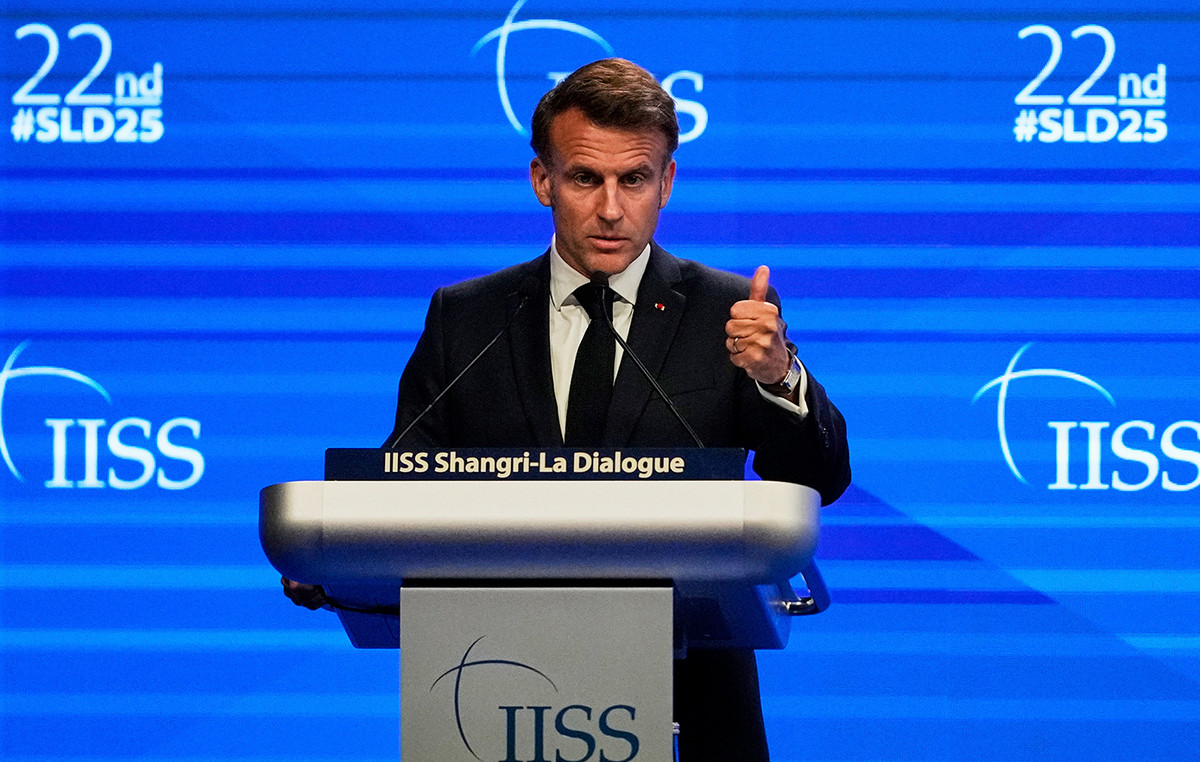Of Eleftheria Kourtali
With central bank stance now the biggest market risk for 2022, according to fund managers, the key question on investors’ minds after decisions by the Fed, the European Central Bank, the Bank of England and other major central banks around the world, which have met or are meeting these days for the last time this year, is exactly when QE will give way to QT. That is, when the quantitative easing will be replaced by the … quantitative tightening or shrinking of the central banks’ balance sheets (quantitative tightening), which means the final end of the ocean of liquidity created by the central banks in recent years, and especially after the outbreak of the pandemic. This is a huge change for the markets, at the height of the stimulus measures during the pandemic, the central banks internationally went to buy assets worth 0.9 billion dollars every hour …
How close is QT?
In the period following the tapering of QE, ie the reduction of the asset purchasing rate, a reinvestment program is usually implemented by the central banks, which is a transitional situation until the support is completely completed. This, although it does not increase the balance sheets of central banks, as they simply invest the assets of expiring assets without “throwing” new money in the markets, but it still acts as a “cushion” for the markets.
When this indirect support, however, ends, then the shrinking of the balance sheets begins, which is a great fear for the markets. The ECB has pledged to reinvest reinvestment after the end of the PEPP, but the Fed’s acceleration of tapering brings this scenario closer, and is something that will affect all markets and investors internationally.
The ECB …
As a result, the ECB is much further away from the QT than the Fed and the Bank of England, which have already taken a more aggressive approach to monetary policy.
The ECB is still “justified” by the different state of the Eurozone economy in relation to, for example, that of the US. The recovery is more advanced in the US, underlying price pressures have risen faster and, more importantly, labor market dynamics are leading to higher wage pressures.
At the same time, so far in Europe there are limited indications of a second round of effects of high wage inflation, there is more relaxation in the labor market and labor market adjustment has been more gradual than in the US. In addition, the ECB needs to monitor 19 countries, some of which are still in the early stages of recovery and need ongoing support.
So, as expected, at its last meeting of the year last Thursday, the ECB decided to continue buying bonds until at least 2024 (mainly through reinvestment), which means that the first interest rate hike is not expected earlier than that, as and the shrinking of its balance sheet. If and when it proves to be correct in its inflation forecasts, which estimates that it will move higher than expected before, but will gradually decline. Specifically, he estimates that this year inflation will increase to 2.6% (from 2.2% before), in 2022 it will move to an average of 3.2% and in 2023-2024 it will move to 1.8%. Thus, as he stressed, the easing of monetary policy is still necessary in order for inflation to stabilize at the 2% target in the medium term.
At the same time, it decided to increase the monthly purchases under the regular QE program to 40 billion euros in the second quarter of 2022 and to 30 billion euros in the third quarter, while from October 2022 onwards it will maintain net purchases in a monthly rate of € 20 billion for as long as is deemed necessary to enhance the easing effect of its policy rates. The ECB expects net purchases to end shortly before it starts raising key interest rates. In addition, it extended the reinvestment timeline for the PEPP program until at least the end of 2024, stressing that, in the event of a new fragmentation in pandemic-related markets, PEPP reinvestments could be adjusted flexibly at any time. time, asset categories and countries, while clean markets under PEPP could be restarted, if necessary, to address the negative pandemic-related disturbances.
… and the Fed
Bond investors had largely appreciated the Fed’s more aggressive stance on inflation. The move to a faster decline in new bond markets from $ 120 billion a month to zero was well-communicated, as were new forecasts from policymakers who have now convinced the market that the first rate hike will come at the latest. in May, with more to follow by the end of the year.
However, a question that remains is when the Fed can move from reducing bond markets to shrinking its balance sheet, according to a Reuters analysis. Following the 2014 tapering, the Fed kept its balance sheet virtually stable for about three years and finally began to shrink its positions starting in 2018, allowing some bonds to expire without reinvesting their funds, a process that became known as “quantitative tightening” or “QT”.
“Now that the quantitative easing is coming to an end faster and the first interest rate hikes are on the horizon, the biggest concern will be the possibility of a shrinking balance sheet,” said Rick Rieder, BlackRock’s chief investment officer. However, Rieder believes that the chances for the launch of QT in 2022 are low, with the market estimating that it will not happen before 2024. For their part, TD Securities analysts estimate that the Fed QT will start in March 2023.
Collin Martin, a fixed-income market analyst at the Schwab Center for Financial Research, said he was focusing on when the Fed’s balance sheet cut could begin, as interest rate hikes could further flatten the yield curve. or even overturn it if long-term interest rates do not rise. An inverted yield curve can be a harbinger of a recession.
“If they start allowing bonds to mature and then do not accelerate their buying pace, that means someone else has to do it,” he said. This could lead to lower demand and higher long-term yields, preventing the yield curve from flattening too quickly.
However, investors noted that the Fed seems to have managed to avoid panic, in contrast to 2013, when bond yields skyrocketed during the so-called “taper tantrum”. “Nobody is talking about a dramatic tightening,” said Brian Nick, Nuveen’s chief strategic investment analyst. “And so the market environment will continue to be favorable for investors to take risks.”
What are funds most afraid of?
Although at the moment the “subject” of the markets is the interest rate hikes after a long period of historically low levels, QT will soon have a prominent place in the “table” of funds.
In any case, the attitude of central banks has now become the No. 1 fear for investors. In particular, according to a Bank of America survey, central banks are now the biggest concern among fund managers.
Rising central bank interest rates are now the biggest risk for markets, according to 42% of fund managers, “stealing” the first place from inflation, which is considered the biggest risk by 22% of respondents. It is the first time since May 2018 that central bank interest rate hikes are the biggest concern.
A resurgence of COVID-19 ranks third with 15%, ahead of bubbles in various asset categories, which rank fourth with 8%. At the end of the list, geopolitical risks are seen as a threat to markets by 6% of funds, China’s credit transfer by 4% and the monetary crisis in emerging markets by 1%.
Of the 371 participants in the relevant BofA poll, with 1.1 trillion. dollars in managed assets, the small majority of 55% still see inflation as temporary. More than a third, 36%, consider it a permanent phenomenon.
In addition to cash accumulation, investors are also adopting a more defensive stance, with overweight positions in healthcare stocks and underweight positions in assets exposed to interest rate hikes, including bonds and emerging markets, according to research.
BofA pollsters say emerging market shares and the S&P 500 are expected to show the best returns in 2022. But the year may have a difficult start: both stock markets and credit markets will record negative returns in the first half of 2022.
“The issue that will prevail in the first half of 2022 will be the interest rate shock,” according to the American bank. “This is a natural consequence of what the markets saw in November, which was an inflation shock. And, in turn, this followed the ‘panic’ of policymakers in October and the dramatic recovery of the economy.”
Good news for European banks
The new inflationary environment and the way that has been opened for interest rate hikes and a more aggressive stance by central banks are, however, particularly supportive of European banks, as noted by UBS, which says it is positive for the industry, expecting continued growth. of banking stocks and in 2022.
Rising COVID-19 cases in Europe, the emergence of the Omicron variant, and government responses pose downward risks to short-term growth expectations and interest rates. However, the Swiss bank’s baseline scenario is a supportive macroeconomic environment and a favorable market environment for European banks in 2022, with Omicron posing a risk as to when and how interest rate hikes will take shape, but not a credit risk. Thus, UBS expects strong GDP growth in 2022, which will be supported by unusually high inflation, being a positive signal for banking stocks.
While there is intense debate as to whether current high inflation and seemingly very “tight” labor markets will prove to be temporary, markets are currently expecting short-term interest rates to rise in most parts of the world next year. Banks are good means of hedging inflation and are now more interest-oriented than ever.
As he explains, the loan-to-deposit ratios fell to 93%, from 100% in 2019, with QE adding an incredible 30% of GDP to their reserves. This extra liquidity is a negative signal for profit margins when interest rates fall, but it is stronger than the market perceives when interest rates rise.
Thus, UBS maintains a positive attitude for the industry in 2022, noting that the shares of European banks have recorded an increase of 30% this year, which is a moderate re-rating given the significant improvement in their outlook.
.
I am Sophia william, author of World Stock Market. I have a degree in journalism from the University of Missouri and I have worked as a reporter for several news websites. I have a passion for writing and informing people about the latest news and events happening in the world. I strive to be accurate and unbiased in my reporting, and I hope to provide readers with valuable information that they can use to make informed decisions.


.jpg)


